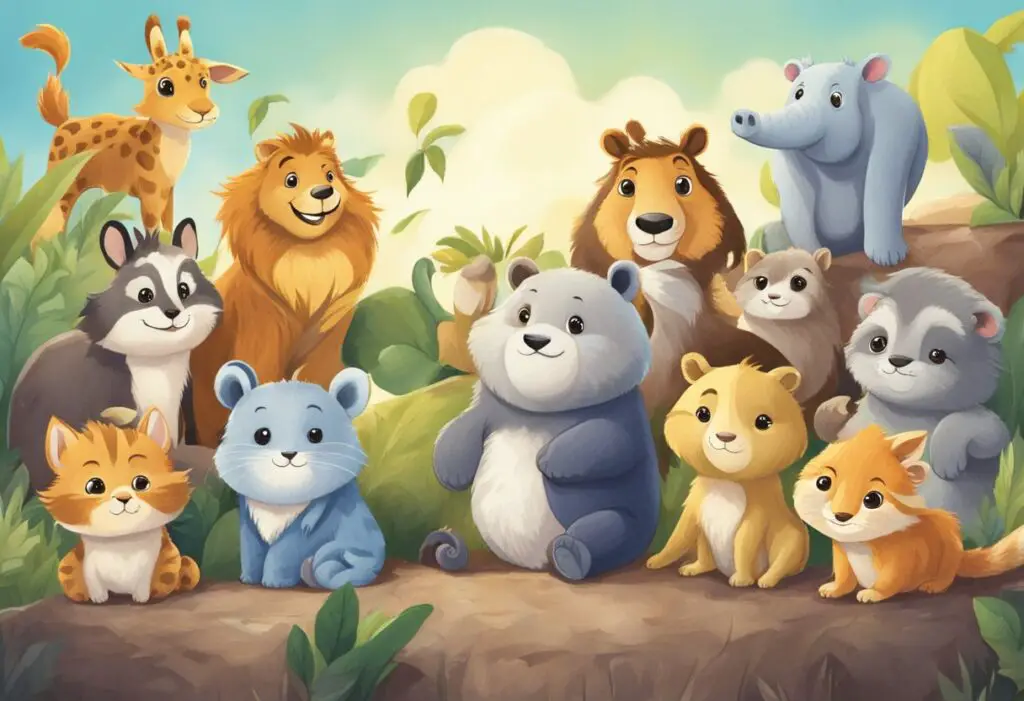So, you’ve heard about a growth mindset for kids, but you’re not exactly sure what it is or how it can benefit your child.
Well, you’re in luck because we’re here to break it down for you in a way that’s both informative and entertaining.

First things first, a growth mindset is a theory developed by Carol Dweck that suggests our abilities and intelligence can be developed through hard work, dedication, and perseverance. On the other hand, a fixed mindset is the belief that our abilities and intelligence are static and cannot be changed. So, why is this important for kids? Well, research has shown that children with a growth mindset are more likely to embrace challenges, learn from their mistakes, and ultimately achieve greater success in life.
Now, we know what you’re thinking. How can you help your child develop a growth mindset? Don’t worry; we’ve got you covered. In the following paragraphs, we’ll share some fun and engaging activities that you can do with your child to help foster a growth mindset. So, grab a pen and paper, and get ready to take some notes!
The Battle of the Mindsets: Growth vs Fixed
The Mindset Theory
According to the mindset theory developed by Carol Dweck, there are two types of mindsets: growth and fixed. A growth mindset is the belief that intelligence, abilities, and talents can be developed over time through hard work, effort, and dedication. On the other hand, a fixed mindset is the belief that intelligence, abilities, and talents are fixed and cannot be changed.
Differences and Examples
The differences between the two mindsets can be quite stark. For example, someone with a growth mindset may see a challenge as an opportunity to learn and grow, whereas someone with a fixed mindset may see a challenge as a threat to their intelligence or abilities. Similarly, someone with a growth mindset may embrace failure as a chance to learn and improve, while someone with a fixed mindset may avoid taking risks for fear of failure.
Two Mindsets in the Classroom
The mindset theory has important implications for the classroom. Teachers who understand the difference between growth and fixed mindsets can help their students develop a growth mindset, which can lead to greater academic success and a love of learning. For example, a teacher with a growth mindset may praise a student for their effort and hard work rather than their intelligence or natural abilities. This can help the student develop a growth mindset and a belief in their own ability to learn and grow.
In summary, the battle between growth and fixed mindsets is a real one, and it can have a significant impact on a child’s academic and personal success. By understanding the mindset theory and the differences between the two mindsets, teachers and parents can help their children develop a growth mindset and a love of learning that will serve them well throughout their lives.
-

Bold Male Pride – Baseball Trucker Cap Celebrating Masculinity
£18.00 Select options This product has multiple variants. The options may be chosen on the product page -

Dad Bod Appreciation Gift Mug
£14.00 Add to cart -

Dad Bod, Bad Jokes Structured Baseball Cap
£22.00 Select options This product has multiple variants. The options may be chosen on the product page
Nurturing the Growth Mindset at Home
As a parent, you play a crucial role in nurturing your child’s growth mindset. By fostering a growth mindset at home, you can help your child develop a love for learning, resilience, and a positive attitude toward challenges.
Growth Mindset Activities
There are plenty of fun activities that you can do with your child to promote a growth mindset. For example, you can encourage your child to take on new challenges, such as learning a new skill or trying a new hobby. You can also play games that promote problem-solving, creativity, and critical thinking. Some great examples include puzzles, board games, and brain teasers.
Another great way to promote a growth mindset is to encourage your child to set goals and work towards achieving them. You can help your child break down big goals into smaller, more manageable steps and celebrate their progress along the way.
Books and Stories for a Growth Mindset
Reading books and stories that promote a growth mindset is a great way to inspire your child and help them develop a positive attitude toward learning. Some great examples include “The Little Engine That Could” by Watty Piper, “Your Fantastic Elastic Brain” by JoAnn Deak, and “The Most Magnificent Thing” by Ashley Spires.
The Power of Language and Praise
The language you use when talking to your child can have a big impact on their mindset. Instead of praising your child for their intelligence or natural abilities, try praising them for their effort, persistence, and hard work. For example, instead of saying, “You’re so smart!” say, “I’m proud of you for working so hard on that project!”
It’s also important to avoid using negative language when talking about challenges or setbacks. Instead of saying, “I can’t do this” or “This is too hard,” encourage your child to reframe their thinking by saying, “I can’t do this yet” or “This is a challenge, but I can figure it out with some help.”
By nurturing a growth mindset at home, you can help your child develop the skills and attitudes they need to succeed in school and in life. So why not get started today with some fun activities, inspiring books, and positive language and praise?
The Science Behind the Growth Mindset
So, you want to know what makes a growth mindset so special? Well, let’s dive into the science behind it and find out!
Neuroplasticity and the Brain
First things first, let’s talk about neuroplasticity. This fancy term refers to the brain’s ability to change and adapt over time. It’s the reason you can learn new things and develop new skills with practice and effort. Research has shown that a growth mindset can actually change the physical structure of the brain, making it more adaptable and open to learning [1]. So, the more you believe in your ability to grow and learn, the more your brain will follow suit!
The Role of Effort and Persistence
Now, let’s talk about effort and persistence. A growth mindset is all about believing that your abilities can be developed with hard work and dedication. This means that effort and persistence are key to success. Studies have shown that students who believe in a growth mindset are more likely to put in effort and persist through challenges [2]. So, the next time you’re faced with a difficult task, remember that your effort and persistence will pay off in the long run.
The Impact of Failure and Mistakes
Last but not least, let’s talk about failure and mistakes. In a growth mindset, failure and mistakes are seen as opportunities for growth and learning. Rather than giving up or feeling discouraged, those with a growth mindset use failure and mistakes as a chance to reflect and improve. Research has shown that students with a growth mindset are more resilient in the face of failure and are more likely to bounce back [3]. So, don’t be afraid to make mistakes or fail – it’s all part of the learning process!
In summary, a growth mindset is all about believing in your ability to learn and grow and embracing effort, persistence, and failure as opportunities for growth. So, keep practicing, keep learning, and keep growing!
[1] The Neuroscience of Growth Mindset and Intrinsic Motivation
[2] Growth Mindset and Children’s Health – Harvard Graduate School of Education
[3] How to Nurture a Growth Mindset in Kids: 8 Best Activities
Unleashing the Potential of Growth Mindset
Are you tired of seeing your child struggle with self-doubt and fear of failure? It’s time to unleash their potential with the power of a growth mindset! By embracing challenges opportunities, and the belief that intelligence and abilities can be developed through effort, learning, and persistence, your child can develop the resilience and grit needed to succeed in life.
Strategies for Success
So, what are some strategies you can use to help your child develop a growth mindset? Start by praising their effort, not just their achievements. Encourage them to take risks and try new things, even if they might fail at first. Teach them to view mistakes as opportunities for learning and growth rather than as failures. And most importantly, model a growth mindset yourself by embracing challenges and persevering through obstacles.
The Role of Motivation and Goals
Motivation and goal-setting are also key components of a growth mindset. Help your child identify their passions and interests and set achievable goals that align with those interests. Encourage them to take ownership of their learning and development and focus on the learning process rather than just the outcome. By setting realistic goals and celebrating progress along the way, your child will develop the motivation and drive needed to achieve their full potential.
Embracing Challenges and Opportunities
Finally, it’s important to teach your child to embrace challenges and see them as opportunities for growth. Encourage them to step outside of their comfort zone and take on new challenges, even if they might be scary at first. Teach them to view setbacks and obstacles as temporary roadblocks rather than insurmountable barriers. And remind them that with hard work, perseverance, and a growth mindset, anything is possible!
So, what are you waiting for? Start unleashing your child’s potential with the power of a growth mindset today!
The Funny Side of Growth Mindset

If you’re looking to inject some humor into your growth mindset lessons, there are plenty of resources available to help you out. Here are a few ideas to get you started:
Humorous Mindset Posters
Posters can be a great way to reinforce growth mindset concepts in a fun and memorable way. But who says they have to be serious all the time? There are plenty of humorous posters available that can help students remember important mindset lessons while also giving them a chuckle. For example, you could display a poster that reads, “Mistakes are proof that you’re trying!” with a cartoon character making a silly face.
Comic Books for Growth Mindset
Comic books are a great way to engage reluctant readers and get them excited about learning. When it comes to a growth mindset, there are plenty of comic books available that can help teach important concepts in a fun and engaging way. For example, “The Power of Yet” is a comic book that follows a young girl as she learns to embrace the growth mindset concept of “not yet” instead of giving up when things get tough.
Fun Activities for Learning
Learning doesn’t have to be boring! There are plenty of fun activities you can do with your students to help reinforce growth mindset concepts. For example, you could have students create their own “growth mindset” superhero and write a story about how they use their growth mindset powers to overcome challenges. Or, you could have students play a game where they have to come up with as many growth mindset phrases as possible in a set amount of time.
Overall, incorporating humor into your growth mindset lessons can help make the concepts more memorable and engaging for your students. Whether you use humorous posters, comic books, or fun activities, there are plenty of ways to inject some laughter into your lessons while still teaching important mindset concepts.







